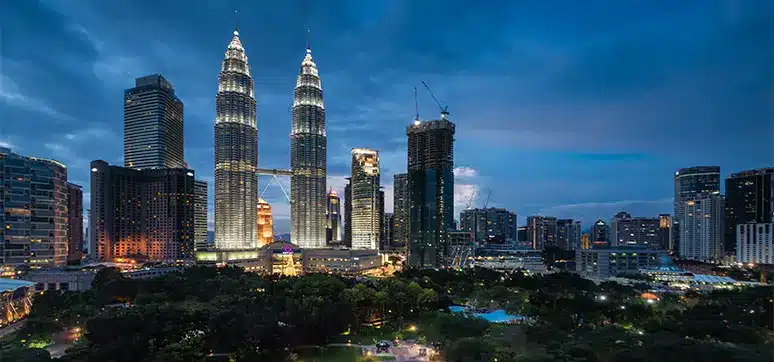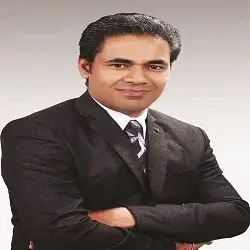A candid conversation with Malvinder Singh Rooprai a BU Head (AIS Division) at Kuraray India Pvt. Ltd., wherein he spoke about the company Kuraray and its products, the company’s presence in India, recently launched products and services, the latest advancements in your R&D, manufacturing facilities and technologies in production, the challenges faced by the industry and a few solutions which can be adopted. Excerpts from his interview:
Please tell us about the company Kuraray and its products. When was it established?

Kuraray is a leading, Japanese multinational chemical company founded in 1926. The company got its name from Kurashiki city and the RAYON fibre, commercialised in the same year. Today, Kuraray produces a diversified range of products that find its application in textiles, paints, adhesives, concrete admixtures, fibre-reinforced concrete, food packaging, and automobiles. For laminated safety glass, which finds its applications in car windshields and building façades, it manufactures, Kuraray is the market leader for producing innovative and advanced interlayer solutions: Trosifol® PVB and SentryGlas® ionoplast interlayers.
What are the major milestones in the company’s journey?
2004 – Acquisition of the Trosifol® business of HT Troplast AG
2014 – Acquisition of DuPont’s GLS business
2019 – Start of operations of a new SentryGlas® line in the Czech Republic
2019 – Launch of SentryGlas® Xtra™
2021 – Increase in line width of SentryGlas® to 3300 mm
2022 – Launch of BirdSecure® Pro interlayers
2024 – Launch of Trosifol® Extra Stiff Pro
Tell us about the brand’s presence in India and its market.

Products of Kuraray have a strong brand recognition not only in India but all over the globe specifically in Europe and the US. Trosifol® Clear PVB, formerly known as Butacite® of DuPont is a strong brand in the US and India. Trosifol® UltraClear PVB, manufactured in Germany has great acceptance in the Indian market due to its lowest yellowness index and clarity in the industry. SentryGlas®, which is an advanced interlayer, known for its high structural performance at elevated temperatures, is our hero product and has no competition due to its uniqueness. It was introduced to the Indian market in 2009 and we have been successful in increasing its market more than 5 times since then.
Could you please brief me on some of your recently launched products?

We have launched a new variant of SentryGlas® that is known as SentryGlas® Xtra™ that can be processed by our customers just like they process PVB. Processing of regular SentryGlas® is a bit different. We are promoting Trosifol® Spallshield® CPET which is a new product for the Bullet Resistant Glazing (BRG) applications in India. Its unmatched durability and ability to perform at elevated temperatures make it outperform conventional BRGs that make use of Polyurethane and Polycarbonate. We have also launched BirdSecure® Pro to prevent bird death due to their accidental collision with transparent or highly reflective glass façades. Trosifol® Extra Stiff Pro is the latest addition to our product portfolio of structural interlayers. It is the stiffest PVB interlayer with exceptional edge stability and post-breakage strength that outperforms the competition. For the automotive industry, we have Trosifol® The Wedge for HUD (heads-up display) and special sound protection films.
What are the latest advancements in your R&D, technologies in production, and products?

We have identified Sustainability as one of the strategic growth pillars of our business. By 2030, we aim to reduce our CO2 emissions by 30 % of the CO2 emissions in 2019(base year) and by 2050 we are committed to becoming carbon neutral. Our structural interlayers i.e. SentryGlas® and Trosifol® Extra Stiff Pro enable lowering the embodied carbon content by allowing thinner glass panes to be used, in comparison to glass panels making use of PVB interlayer. Our R&D is working on a “Green” PVB that will have a minimal carbon footprint. We are also commercialising a new structural interlayer for interior applications that will have improved structural and post-breakage strength.
Please tell us about your company’s manufacturing facilities.
We have manufacturing facilities for Trosifol® PVB interlayers in the US, Germany, the Czech Republic and South Korea. SentryGlas® ionoplast is manufactured in the US and Czech Republic.
Tell us about some of the iconic projects in which your products are used as exterior cladding materials.
SentryGlas® is our hero product that has been used in several mega projects all over the world due to its uniqueness. Shanghai Tower in China, World One by Lodha in Mumbai, Omkar 1973, Kalpataru Vista, Apple store projects all over the world, Steve Jobs Theatre at Apple Head Office at Cupertino.

Please throw some light on the latest materials, technologies, and trends in façade cladding in India.

There can be so many perspectives to answer this question. From the perspective of an interlayer manufacturing company we see sustainability as a new mega trend in the making. The trend is catching up slowly in India as we are mostly followers of the trends. Developed countries like Singapore have chalked out plans to impose a carbon tax and it will be no wonder if India follows it in future as we can foresee regulations on reducing carbon emissions will become stringent. Saint Gobain launched its low-carbon glass in 2023 in India. The use of low-carbon interlayers with low-carbon glass will further add value from a sustainability perspective. Recyclability of a product is one of the key steps towards sustainability.
However, at present, laminated glass cannot be recycled as the separation of interlayer from glass fragments is a tedious process, whose commercial viability and scalability are yet to be fully established. Kuraray has taken active initiatives in this direction to solve this issue and contribute its bit to save our planet.
Tell us about the testing and certification methods for your products, especially those for fire safety.

All our Trosifol® PVB and SentryGlas® ionoplast interlayers are commercialised after mandatory testing required by the applicable EN, ISO, ANSI and ASTM standards and of course Indian Standards. In fact, our products exceed the minimum performance required by Indian Standards. Talking about fire safety, it is noted that laminated glass is not fire retardant. However, SentryGlas® shows better performance than PVB in terms of flame spread and flammability, indicated by tests done on interlayers as per ASTM E84.
What do you see as the main challenges faced by the industry?

There are multi-fold challenges related to the use of laminated glass in the industry. Unfortunately, the awareness about the usage of laminated glass in buildings in tier 2 and 3 cities of our country is not what it should be as per the standards framed by the Bureau of Indian Standards. We also see a reluctance for the use of laminated glass due to associated risks of delamination that often result from failure to comply with best practices of glass tempering lamination and installation. Kuraray takes a lot of initiatives to raise the bar for the quality of laminated glass in the country through its QNL (Quality Network of Laminators) program. Next comes, the issue arising from the use of counterfeit products as we have noticed the import of fake products from China. Unfortunately, it is not so easy to identify the make of the interlayer once the glass has been laminated.
What keeps your company ahead of its competitors in terms of products and services offered?
We have some unique products like SentryGlas®, Trosifol® Spallshield® CPET, Trosifol® Diamond White and Trosifol® Brilliant Black, Trosifol® SC Monolayer (for acoustic applications) that have no match in the industry. We work very closely with our customers to ensure they get our best service. Our customers who are certified for our QNL program have an advantage over others for winning projects with demanding specifications.
Where do you see the glazing industry evolving over the next 10 years?

Market research reports indicate the growth of the glazing industry is proportional to the growth in the real estate Industry. The way India’s real estate market has grown in the past from public housing projects to, the post-liberalisation, next-generation journey from medium to large-scale projects including IT, Shopping Malls, Expo centres, Airports, Commercial Office Buildings, Big Budget Housings resulting in 2024. India’s Real estate market is the fastest-growing market in the world.
As per a market research report of Technavio, the trends are clear as in 2022 homes worth INR 3.2 Lakh Crore were sold, the next year it has grown to INR 4.5 Lakh Crore and that’s a 38% rise in just 1 year. Growth has been stable, the fundamentals are strong and the Central bank has also not increased the interest rates resulting in a clear indicator of the Indian Economic Growth trajectory. Also, with increasing technological advances in the façade industry, future buildings are set to make use of materials that are more advanced, eco – eco-friendly. Sustainability will become central to the design of façades in the future, as several industries are committed to cutting their carbon footprints ranging from 30 % to 50 % by 2030.
The growing construction of residential buildings is notably driving the façades market growth, although increasing prices of raw materials used in the manufacturing façade may impede the market growth. The façades market size is estimated to grow at a CAGR of 7.58% between 2022 and 2027.

In 2023 India’s real estate market was worth USD 265BN and as per the industry projections by 2030 it will be One Trillion USD and by 2047 it’s expected to reach USD 5.8 Trillion 12-fold ride in this duration. Currently, the Industry is contributing 7% to the Indian GDP and employs 50MM million people, majorly Cement, Steel and Glass depend on this industry, and all of these will contribute to 50% of countries GDP by 2047, and it will be a mammoth sector.
The façade Industry is matching the growth of Steel and Cement, and it’s presumed the growth will be much faster.














